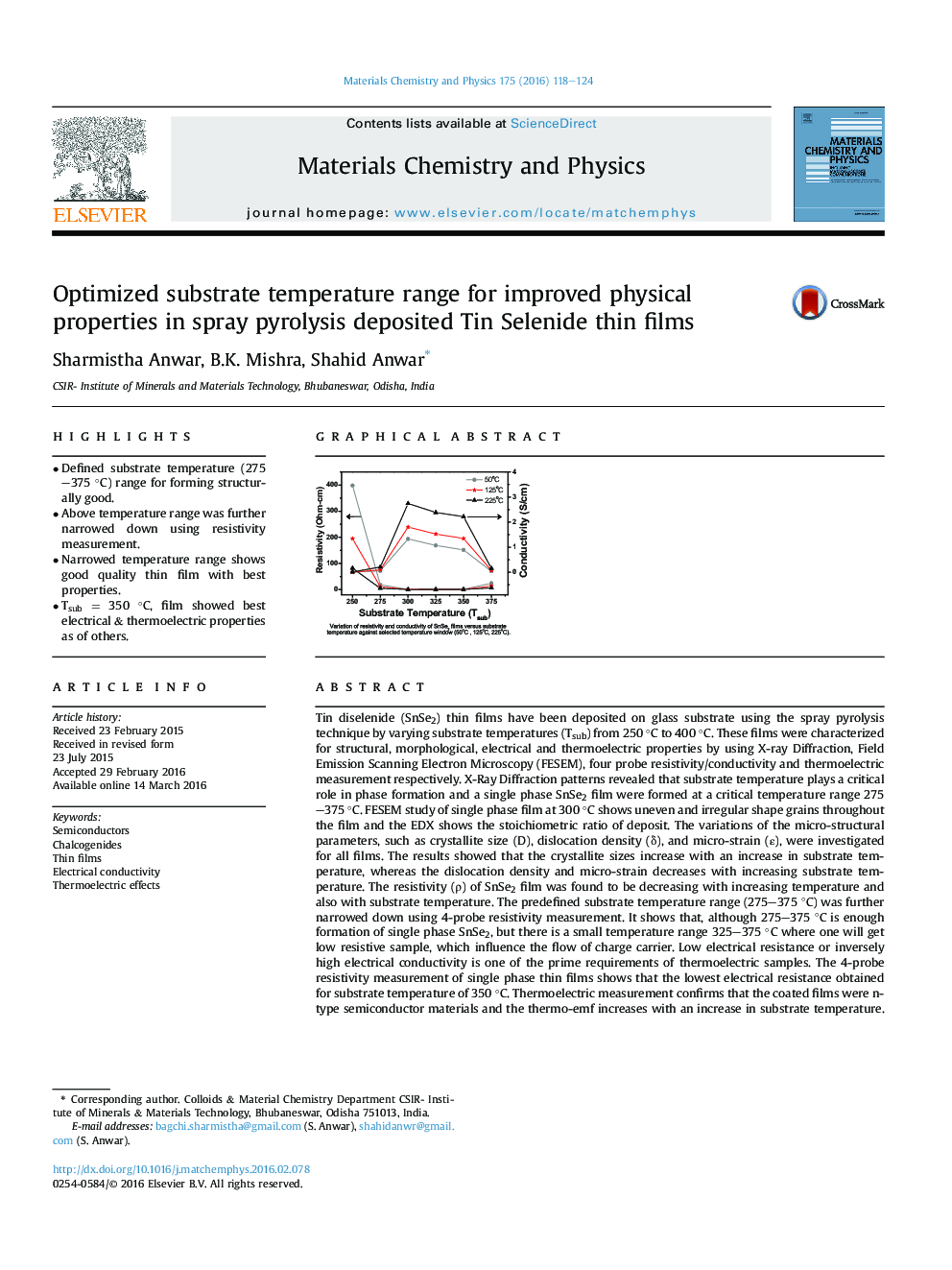| کد مقاله | کد نشریه | سال انتشار | مقاله انگلیسی | نسخه تمام متن |
|---|---|---|---|---|
| 1520947 | 1511788 | 2016 | 7 صفحه PDF | دانلود رایگان |
• Defined substrate temperature (275–375 °C) range for forming structurally good.
• Above temperature range was further narrowed down using resistivity measurement.
• Narrowed temperature range shows good quality thin film with best properties.
• Tsub = 350 °C, film showed best electrical & thermoelectric properties as of others.
Tin diselenide (SnSe2) thin films have been deposited on glass substrate using the spray pyrolysis technique by varying substrate temperatures (Tsub) from 250 °C to 400 °C. These films were characterized for structural, morphological, electrical and thermoelectric properties by using X-ray Diffraction, Field Emission Scanning Electron Microscopy (FESEM), four probe resistivity/conductivity and thermoelectric measurement respectively. X-Ray Diffraction patterns revealed that substrate temperature plays a critical role in phase formation and a single phase SnSe2 film were formed at a critical temperature range 275–375 °C. FESEM study of single phase film at 300 °C shows uneven and irregular shape grains throughout the film and the EDX shows the stoichiometric ratio of deposit. The variations of the micro-structural parameters, such as crystallite size (D), dislocation density (δ), and micro-strain (ε), were investigated for all films. The results showed that the crystallite sizes increase with an increase in substrate temperature, whereas the dislocation density and micro-strain decreases with increasing substrate temperature. The resistivity (ρ) of SnSe2 film was found to be decreasing with increasing temperature and also with substrate temperature. The predefined substrate temperature range (275–375 °C) was further narrowed down using 4-probe resistivity measurement. It shows that, although 275–375 °C is enough formation of single phase SnSe2, but there is a small temperature range 325–375 °C where one will get low resistive sample, which influence the flow of charge carrier. Low electrical resistance or inversely high electrical conductivity is one of the prime requirements of thermoelectric samples. The 4-probe resistivity measurement of single phase thin films shows that the lowest electrical resistance obtained for substrate temperature of 350 °C. Thermoelectric measurement confirms that the coated films were n-type semiconductor materials and the thermo-emf increases with an increase in substrate temperature. Among all the films the film with substrate temperature of 350 °C shows enhanced behaviour to be used in industrial applications.
Figure optionsDownload as PowerPoint slide
Journal: Materials Chemistry and Physics - Volume 175, 1 June 2016, Pages 118–124
